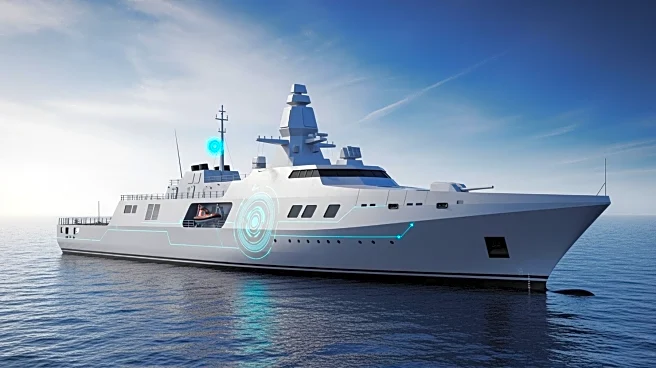What's Happening?
The Royal Thai Air Force (RTAF) has announced the development and upcoming production of two new loitering munitions, the KB-10G and KB-5E, designed for medium-range and long-range suppression of enemy
air defense missions. These munitions, unveiled at the Defense & Security 2025 show in Bangkok, are equipped with GPS/inertial navigation systems and target radar systems, armored vehicles, and airstrips. Developed by the RTAF's Research and Development Center for Space and Aeronautical Science and Technology, the Directorate of Armament, and engineers at the Navaminda Kasatriyadhiraj academy, the munitions will be produced by Thai Aviation Industries starting December 2025.
Why It's Important?
The development of the KB family of loitering munitions represents a significant advancement in Thailand's defense capabilities, enhancing its ability to conduct suppression of enemy air defense missions. This move reflects Thailand's strategic intent to bolster its military technology and operational readiness. The production of these munitions may influence regional security dynamics, as neighboring countries assess their own defense strategies in response. The integration of advanced navigation systems in these munitions highlights the growing importance of precision and technology in modern warfare.
What's Next?
The RTAF plans to build a total of 40 units of the KB-10G and KB-5E munitions following evaluations. As production begins, Thailand may seek to further develop its defense technology and explore potential export opportunities. The deployment of these munitions could lead to increased military exercises and collaborations with allied nations. Regional stakeholders may monitor Thailand's defense developments closely, considering potential implications for regional security and military balance.
Beyond the Headlines
The production of loitering munitions by Thailand underscores the global trend towards advanced military technology and autonomous systems. This development raises ethical and legal questions about the use of such technology in warfare, particularly concerning precision targeting and civilian safety. The focus on enhancing military capabilities may also reflect broader geopolitical shifts in Southeast Asia, where nations are increasingly investing in defense to address regional security challenges.











